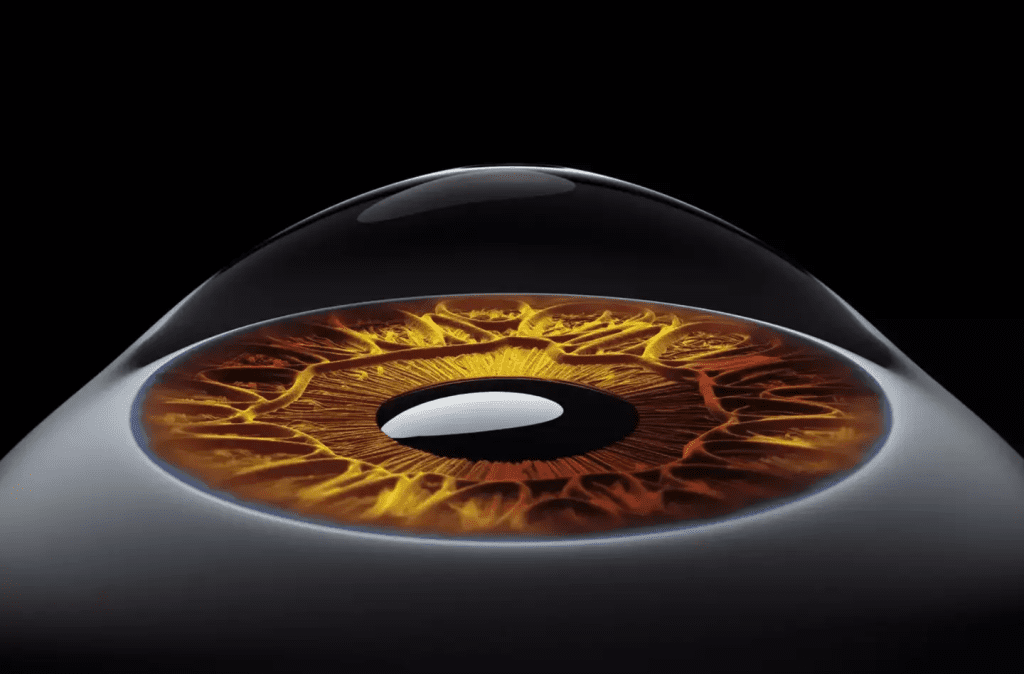Have you ever noticed enchanting beams of light stretching from common light sources, almost as if they were straight out of a fantasy film? If so, you might be part of the one-third of Americans living with a condition called astigmatism. This eye condition doesn’t just affect your vision—it can add a magical twist to the world around you, transforming ordinary light into something extraordinary.
Whether it’s the soft glow of dawn or the sharp glare of car headlights at night, astigmatism can make everyday sights appear beautifully distorted. But what exactly is this condition, and why does it cause such captivating visual effects? Let’s explore how astigmatism transforms light and what it means for those experiencing it.
What Is Astigmatism?

Astigmatism is a common refractive error caused by an irregularly shaped cornea or lens. Normally, a healthy eye has a perfectly round cornea and lens, allowing light to enter evenly and focus sharply on the retina. However, in individuals with astigmatism, the cornea or lens takes on an oval or football-like shape, bending light unevenly as it enters the eye. This uneven bending creates blurry or distorted vision.
For people with astigmatism, light from street lamps, car headlights, or even screens can appear stretched out into beams or halos. This phenomenon, while visually stunning, can also be disorienting and uncomfortable, particularly at night.
The Mesmerizing Light Beams of Astigmatism
Imagine driving on a rainy night. The streetlights shimmer and stretch into beams of light, while the raindrops on your windshield make the scene look like something from a sci-fi movie. This is the reality for many people with astigmatism. Light sources don’t appear as neat points; instead, they stretch into radiant beams, adding an artistic twist to everyday visuals.
One Reddit user shared their experience, saying, “I always thought this was normal… When it rains at night, the streetlights would stretch into red and green stars. Then I found out I have astigmatism; crazy to think not everyone sees the glare.” For those living with this condition, this magical view is just another part of their daily life.
Why Does Astigmatism Cause These Visual Effects?
So why do these light beams happen in the first place? It all comes down to how light enters the eye. In a normal eye, light is focused evenly onto the retina, resulting in a clear image. But with astigmatism, light is refracted in multiple directions due to the cornea’s irregular shape. This misalignment causes light to scatter, creating those distinctive beams or halos around bright lights.
These beams are often more noticeable in low light conditions, like at dusk or nighttime, when your pupils dilate and allow more light to enter the eye. This is why people with astigmatism often report difficulty seeing at night, as these beams can obscure vision and create a glare that makes driving or reading difficult.
Common Symptoms of Astigmatism

Astigmatism can present in varying degrees of severity, but there are some common symptoms to watch out for:
- Blurry or Distorted Vision: Objects may appear fuzzy or warped, especially at a distance.
- Frequent Squinting: Many people with astigmatism squint to try and focus their vision.
- Headaches: Straining to see clearly can lead to tension headaches.
- Eye Strain: You may feel tired or fatigued after prolonged visual tasks like reading or working on a computer.
- Night Vision Problems: As mentioned, lights may create glare, making nighttime activities difficult.
For those with mild astigmatism, these symptoms might not be immediately noticeable, which is why regular eye exams are so important. Early detection can prevent these symptoms from worsening over time.
How Is Astigmatism Diagnosed?
The only way to definitively diagnose astigmatism is through a comprehensive eye examination. An optometrist or ophthalmologist will conduct a series of tests to assess your vision and determine the shape of your cornea. These tests may include:

- Eye Chart Test: You’ll read letters from a chart to gauge your visual clarity.
- Phoropter Examination: A phoropter is used to test different lenses and assess how they affect your vision.
- Keratometry: This device measures the curvature of your cornea.
- Autorefractor Test: This machine assesses the way light reflects off your eye to determine its refractive error.
These exams are quick, non-invasive, and can provide a clear diagnosis of astigmatism, allowing your eye doctor to recommend the best course of action.
Treatment Options for Astigmatism
While astigmatism might sound like a complex condition, the good news is that it’s highly treatable. Depending on the severity of your astigmatism, your eye doctor might suggest one of the following options:

- Eyeglasses: Special lenses designed to correct astigmatism can sharpen your vision, helping to eliminate those blurry or distorted images.
- Contact Lenses: Soft toric lenses are specifically made to correct astigmatism and can provide a comfortable, clear vision without the need for glasses.
- LASIK Surgery: For those seeking a more permanent solution, LASIK can reshape the cornea, allowing light to focus correctly and eliminating the symptoms of astigmatism.
In mild cases, treatment might not be necessary, especially if your astigmatism doesn’t significantly impact your day-to-day life. However, for those who experience more severe symptoms, corrective options can drastically improve quality of life.
The Beauty of Astigmatism: Seeing the World Differently
While astigmatism might sound like a frustrating condition, there’s a unique beauty in how it alters the way you see light. Those captivating beams and radiant halos you notice around streetlights or car headlights are a direct result of the way your eyes refract light. In a way, astigmatism offers you a different perspective on the world, turning everyday sights into something a little more magical.

Of course, managing the condition is essential for your eye health, but there’s no harm in appreciating the unique way astigmatism can shape your visual experience. Seeing the world a little differently might just be one of the hidden perks of living with astigmatism.
Conclusion: Embrace the Magic in the Ordinary
If you’ve ever marveled at the enchanting beams of light stretching from ordinary sources, you may be witnessing the world through the lens of astigmatism. While it’s important to manage any symptoms that impact your vision, don’t forget to appreciate the magic in those luminous beams. Regular eye exams can help keep your vision sharp, but in the meantime, there’s something special about seeing the world in a way that few others do. Remember, beauty is often found in the most unexpected places—even in the beams of light from a streetlamp on a rainy night.